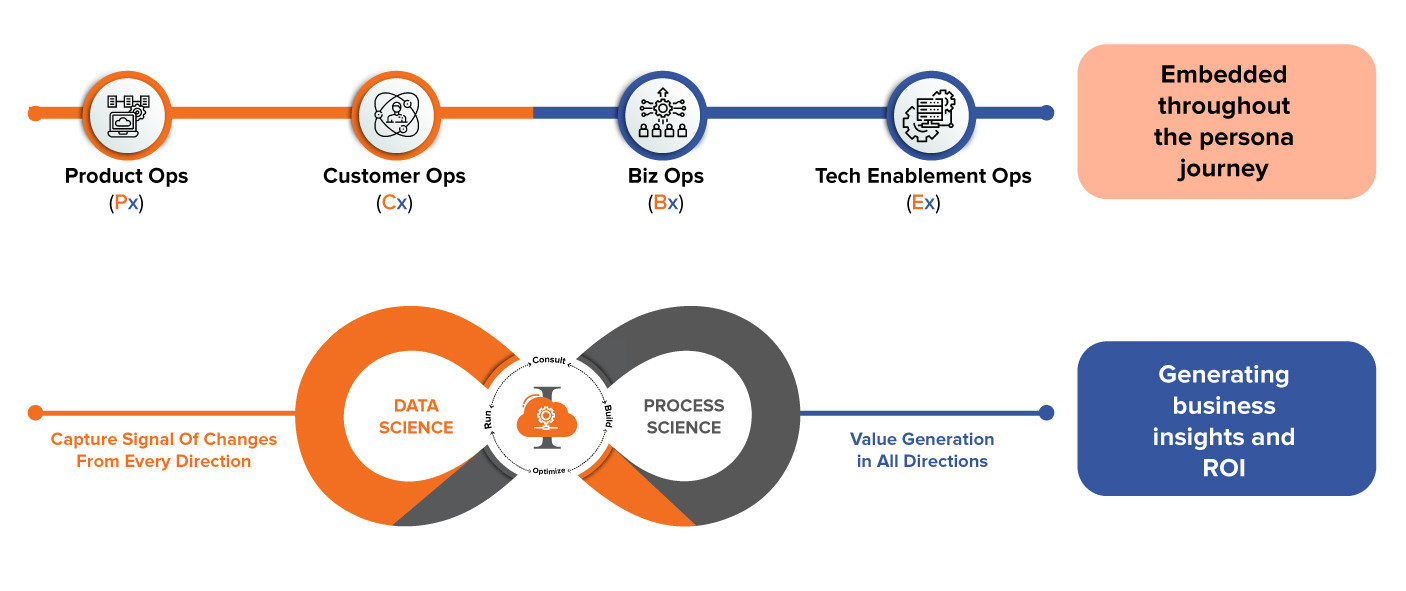Creating an impactful enterprise-wide digital experience (DX) – I
Post the pandemic, Customer Experience (CX) has emerged as the top priority for growth-oriented companies that are expending considerable effort to understand how customers perceive their organization at every stage of their digital interaction. According to Pew Research, “31% of U.S. adults go online ‘almost constantly’ as of 2021.” This is a significant increase from only 21% in 2015.
As the world becomes more digitized, the need to provide comprehensive, consistent, and reliable experience to customers throughout their digital journey will become an imperative. While CX is important to ensure high user adoption and conversion, it is incomplete if you focus only on customers without providing best-in-class digital experience to your employees and partners as well. One of the best ways to strengthen customer experience is by optimizing cross-enterprise DX through experience engineering.
In this article, we will explore the importance of designing and engineering an intuitive digital experience for all users — customers, employees and partners — and look at how this can be achieved with the right experience engineering approach and prudent use of tools and analytics.

Transforming digital customer experience to total digital experience
Achieving seamless CX across multiple touch points is not possible without providing your employees and partners a unified DX across platforms and products they use to serve your customers.
How do you provide this unified digital experience?
- Map the complete digital journey from start to finish – from the perspective of customers, employees and partners.
- Assess the usability and integration capabilities of the platforms and products that help your company fulfil customer requirements.
Begin by understanding each aspect of the work your employees do to provide customers with exactly what they require. From business workflow automation to customer data analytics and digital customer journey mapping, a holistic view through the lens of experience engineering can paint a clear picture of your company’s current digital capabilities.
By mapping customer journeys with the processes that make up the digital employee experience, you will be able to visualize how the systems in place interact to create a holistic experience transformation. The scope of this exercise will include all platforms and digital channels, from systems of record (internal and external), social media and website interactions, to customer service engagement and goal completions.
The next step is to perform process gap analysis that will help you identify pain points as well as candidate processes for digitization and automation. It will provide an independent perspective to highlight customer and employee needs, opportunities for optimization and recommendations of the right technologies to resolve the identified pain points.
When you digitize and automate repetitive tasks and workflows, you end up freeing time and energy of your employees who can focus on enhancing customer experience or on product innovation. Consistent monitoring of customer journeys will produce valuable data which can help you develop a personalized DX delivered effectively and consistently without putting strain on members of the team.
The impact of seamless platform experience for better digital experience
As digital customer experience (CX) has evolved, so too have customer expectations. Customers expect companies to have a continuous and consistent omnichannel presence which can pose a major challenge. A poll conducted by Forbes found that “96% [of consumers] expect companies to make it easy without the need to repeat information.” This means there is a greater demand for businesses to offer a streamlined solution to customer services that don’t bounce customers around from pillar to post.
Over time, as technologies evolved and matured, companies introduced new software to replace or work alongside legacy systems or operating methods to fulfill a requirement. But — and this is the vital point of digital experience management — if the new software isn’t fully incorporated into the preexisting workflow, it may create bottlenecks that hinder both productivity and experience. This inherently has a negative impact on the customer experience.
When systems haven’t been fully integrated with one another, it runs the risk of duplicative work and extended delivery times due to superfluous processes. Not only does this reduce productivity and negatively impact CX, but it also engenders feelings of frustration and dissatisfaction in employees. This can result in a vicious cycle; if the digital employee experience is challenging, workers become less enthused and engaged, it detrimentally affects their interactions with customers and colleagues.
By implementing a holistic digital experience management system, through unified experiences (UX, Workflow & Integration), organizations are able to gain better insight into the operations of customer service and employee efficiency to find creative solutions to any problems identified. To understand further on iOPEX’s Approach to Digital Experience Management Read part two of the blog series.











